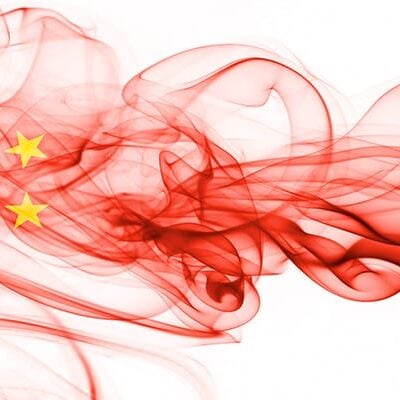We could notate the many economic collapses and resulting civil unrest, widespread hunger and poverty that eventually leads to war, including world wars as nations deploy extreme and drastic measures to survive, but that would require volumes beyond the scope of this article. Let’s take the most recent events that you and I are familiar with that occurred in the last ninety years. To do this will require us to focus on history, which, if not learned from, will repeat itself.
Why Did Japan Attack Pearl Harbor?
History.com gives us an excellent review of the events surrounding the infamous attack: “The attack on Pearl Harbor ranks as the most successful military surprise attack in the early years of combined naval/aerial combat. On December 7, 1941, the Imperial Japanese Navy Air Service struck the United States naval base at Pearl Harbor, Hawaii Territory. The attack directly led to the United States’ entrance into World War Two. Japan quickly followed up the attack with the invasion of numerous Pacific Islands. They held them through several years of gruesome fighting.
“By the time the first Japanese bomber appeared over Pearl Harbor on December 7, 1941, tensions between Japan and the United States had been mounting for the better part of a decade, making war seem inevitable. When Japanese bombers appeared in the skies over Pearl Harbor on the morning of December 7, 1941, the U.S. military was completely unprepared for the devastating surprise attack which dramatically altered the course of World War II, especially in the Pacific theater. But there were several key reasons for the bombing that, in hindsight, make it seem almost inevitable. Tensions began several years earlier between the U.S. and Japan during the ‘Great Depression’ era.
“The wealth of a nation has always been based off of the natural resources they have; gold, minerals, oil. The island nation of Japan, isolated from the rest of the world for much of its history, embarked on a period of aggressive military expansion near the turn of the 20th century. Two successful wars, against China in 1894-95 and the Russo-Japanese War in 1904-05, fueled these ambitions, as did Japan’s successful participation in World War I (1914-18) alongside the Allies. During the Great Depression of the 1930s, Japan sought to solve its economic and demographic woes by forcing its way into China, starting in 1931 with an invasion of Manchuria. When a commission appointed by the League of Nations condemned the invasion, Japan withdrew from the international organization; it would occupy Manchuria until 1945.
“In July 1937, a clash at Beijing’s Marco Polo Bridge began another Sino-Japanese war. That December, after Japanese forces captured Nanjing (Nanking), the capital of the Chinese Nationalist Party, (or Guomindang), they proceeded to carry out six weeks of mass killings and rapes now infamous as the Nanjing Massacre.
“In light of such atrocities, the United States began passing economic sanctions against Japan, including trade embargoes on aircraft exports, scrap metal and oil, among other key goods, and gave economic support to Guomindang forces. In September 1940, Japan signed the Tripartite Pact with Germany and Italy, the two fascist regimes then at war with the Allies in a geo-political shift on alignment of nations.
“Specifically, the oil embargo that America organized with the British and the Dutch was a thorn in the side for Japan, which imported 90% of its oil. Without oil, Japan’s military could not function, and all war efforts would come to an end.
“Negotiations had been going on for months between Washington and Tokyo, without any resolution, so Japan decided to attack first. Tokyo and Washington negotiated for months leading up to the Pearl Harbor attack, without success. While the United States hoped embargoes on oil and other key goods would lead Japan to halt its expansionism, the sanctions and other penalties actually convinced Japan to stand its ground and stirred up the anger of its people against continued Western interference in Asian affairs. To Japan, war with the United States had become to seem inevitable, in order to defend its status as a major world power.
“Emperor Hirohito issued the following statement on the day of the attack outlining their attack on the United States:
“‘It has been truly unavoidable and far from Our wishes that Our Empire has been brought to cross swords with America and Britain… They have obstructed by every means Our peaceful commerce and finally resorted to a direct severance of economic relations, menacing gravely the existence of Our Empire. Patiently have We waited, and long have We endured, in the hope that Our government might retrieve the situation in peace. But Our adversaries, showing not the least spirit of conciliation, have unduly delayed a settlement; and in the meantime, they have intensified the economic and political pressure to compel thereby Our Empire to submission.’”
“Because the odds were stacked against them, their only chance was the element of surprise.
“Destroying the Base at Pearl Harbor Would Mean Japan Controlled the Pacific. In May 1940, the United States had made Pearl Harbor the main base for its Pacific Fleet. As Americans didn’t expect the Japanese to attack first in Hawaii, some 4,000 miles away from the Japanese mainland, the base at Pearl Harbor was left relatively undefended, making it an easy target. Admiral Isoroku Yamamoto spent months planning an attack that aimed to destroy the Pacific Fleet and destroy morale in the U.S. Navy, so that it would not be able to fight back as Japanese forces began to advance on targets across the South Pacific.
“At first, however, the Pearl Harbor attack looked like a success for Japan. Its bombers hit all eight U.S. battleships, sinking four and damaging four others, destroyed or damaged more than 300 aircraft and killed some 2,400 Americans at Pearl Harbor.
“Japanese forces went on to capture a string of current and former Western colonial possessions by early 1942—including Burma (now Myanmar), British Malaya (Malaysia and Singapore), the Dutch East Indies (Indonesia) and the Philippines—giving them access to these islands’ plentiful natural resources, including oil and rubber.
“But the Pearl Harbor attack had failed in its objective to completely destroy the Pacific Fleet. The Japanese bombers missed oil tanks, ammunition sites and repair facilities, and not a single U.S. aircraft carrier was present during the attack. In June 1942, this failure came to haunt the Japanese, as U.S. forces scored a major victory in the Battle of Midway, decisively turning the tide of war in the Pacific.”
Lemielleux.com adds, “Japan’s surprise attack on Pearl Harbor would drive the United States out of isolation and into World War II, a conflict that would end with Japan’s surrender after the devastating atomic bombing of Hiroshima and Nagasaki in August 1945.”
World War II began with Germany’s military aggression to obtain additional territory and the natural resources of those defeated. It involved the geo-political realignment of nations involved including Japan for the above stated reasons of obtaining natural resources in order to survive. World War II ended with two atomic weapons possessed only by the United States at the time.
That’s history you say, we all know that. What does that have to do with us today?
The new question is: “Is there a parallel situation in world events today that could lead to another world war?”
If so, in what situation and with whom? What could trigger prophetic events to unfold?
Mark Moss, investment advisor and Crytpocurrency guru reports, “For the past few years our TV news reports, and documentaries have been replete with the coming domination of the world by China! For several years China has not militarily as Japan expanded in the 1930’s but has secretly in most instances and in broad daylight in others sought to expand its territory and take possession and control of other territory’s natural resources.”
China is in the same circumstance of Japan in that China has very few natural resources and must import nearly everything it needs to survive in this “digital age” of the 21st century. To counter this and insure not only survival but domination, China developed what is known as the, “One Belt One Road or OBOR for short, which is a global infrastructure development strategy adopted by the Chinese government in 2013 to invest in nearly 150 countries and international organizations. It is considered a centerpiece of the Chinese leader Xi Jinping’s foreign policy. The BRI forms a central component of Xi’s ‘Major Country Diplomacy’ strategy, which calls for China to assume a greater leadership role for global affairs in accordance with its rising power and status. As of August 2022, 149 countries were listed having signed up to the BRI.
“Xi originally announced the strategy as the ‘Silk Road Economic Belt’ during an official visit to Kazakhstan in September 2013. ‘Belt’ is short for the ‘Silk Road Economic Belt,’ referring to the proposed overland routes for road and rail transportation through landlocked Central Asia along the famed historical trade routes of the Western Regions, whereas ‘road’ is short for the ‘21st Century Maritime Silk Road,’ referring to the Indo-Pacific Sea routes through Southeast Asia to South Asia, the Middle East and Africa. Examples of Belt and Road Initiative infrastructure investments include ports, skyscrapers, railroads, roads, bridges, airports, dams, coal-fired power stations, and railroad tunnels. The initiative was incorporated into the Constitution of China in 2018.” (Wikipedia)
Until now all has been going to plan with China domination of more and more natural resources and being a leader in the electronic age.
This “Grand Plan” of the Chinese Communist Party led by Chairman Xi came to a screeching halt on August 9, 2022! Just as the United States starved Japan of its oil which led to the attack on Pearl Harbor, the United States just initiated the starving of China of its necessary resource to realize not only its world dominance ambitions, but to simply survive.
From SemiWiki.com we find the Brief History of Semiconductors, which states: “In the last few decades, electronics has become more and more central to our lives. When I was a child the only electronics in the house were the radio and the television, both of which contained tubes. Two big things happened that upended that world: the invention of the transistor and the invention of the integrated circuit by American engineers. A modern integrated circuit, or microchip as some people like to call them, may have over a billion transistors on it and yet sell for just a few dollars. Perhaps more surprising, every one of those transistors works correctly.
“As a result, today our cell phones have more power than the supercomputers of yesteryear. Our cars contain dozens of microprocessors. We shop online. We read books on our Kindles or iPads. We play video games on consoles that are more powerful than the flight simulators of twenty years ago.
“It turns out it is really expensive to make electronics that cheap. Chips are built in factories known as fabs (actually short for fabrication line). Fabs cost more than nuclear power plants. They are filled with specialized machines costing tens of millions of dollars each. Chips are designed by teams of hundreds of design engineers, and they are surrounded by an ecosystem of specialized software that sells for tens if not hundreds of thousands of dollars per copy without which these chips wouldn’t be possible. Getting a chip designed and manufactured is incredibly expensive, but when you are done you have something that can be manufactured for a few dollars and enable products that can be sold for hundreds of dollars. The first chip may cost millions of dollars, but you can make hundreds of millions of dollars if you sell a lot of them.”
This is what China has banked its path to dominance on!
Energy is what the whole world needs; it is what drives the entire world and oil is the most desired commodity in the world! But another resource is referred to today as the “New Oil.” What is that resource? MICROCHIPS or SEMI-CONDUCTORS! Anything that turns on has some form of a microchip or semi-conductor powering it. China’s entire current and future plans are dependent on microchips. China and the United States have been in a trade war in the tech sector since the Trump Presidency. But what just happened on August 9, 2022, is so much bigger than anything that has happened before in this trade war and the implications are enormous on a worldwide scale. Today, China spends almost twice as much importing semiconductors as it does on oil. Why? China is the one manufacturing all these electronic marvels, aren’t they? But the means to manufacture them has to be imported. China has no natural resources for manufacturing microchips. The three top semiconductor manufacturers are the United States, Taiwan and South Korea. But the United States holds all the natural resources for the manufacture of semiconductors.
Enter the CHIPS ACT!
The Chips Act lowered the hammer on China and basically sent China figuratively back to the Dark Ages. China has been around forever with its dynasties but when the world went onto the gold standard, China chose to be on a silver standard. It was a huge mistake, and they lost their place in the world. They had been fighting to recover but then Mao Tse-tung took over. His regime went on a killing spree to get rid of all ideological opposition and set China back, way back, in international trade and status.
On November 15, 1999, the United States and China signed an agreement on trade and tariffs that welcomed China into the WTO (World Trade Organization). This allowed China to import new technology which they used to rapidly come up to speed on the global stage and become more and more advanced in the world of technology. This is why you hear so much about China “taking over the world” and being the dominant superpower with their AI, ballistic missile systems, quantum computing, etc. China exploded technologically because we let them into the WTO and gave them access to the importation of knowledge and systems they cannot manufacture themselves.
Starting with the Trump Administration steps were taken to curb China’s plans to dominate the world due to the fact that China did not develop the technology, THEY STOLE IT! We all know that China literally steals our intellectual property and uses it to develop all its technology with plans dominate the world. That’s all you hear about, how China is the new Superpower of the planet and we all better take lessons in speaking Mandarin. This brings us to the same historical “flash point” between the United States and Japan, ultimately leading to Japan’s attack on the U. S. at Pearl Harbor. Remember, we had cut off Japan’s ability to manufacture products and to wage their expansion wars by cutting off their supply of oil. What the U. S. has done to China is exactly the same scenario we used then. What does the Chip Act do to China and its ambitions?
The Chip Act forbids the exportation to China of any types of tools or equipment in the manufacture or service of Microchips. China has to import all the materials used to make the chips. China cannot make, service or even operate any chips. On top of all that, all U. S. persons or companies working in the Chinese chip sector are forced to choose. Either leave China or lose your U. S. Citizenship. So, China’s chips are dead! What are the implications of this move by the U. S.? They are unable to advance technologically! They can’t buy or make the chips and are unable to operate facilities for Level 1 chips. Basically, any industry that needs hardware dies! Their AI, firewalls, Social Credit Score system, surveillance, ballistic missiles, their space program, robotics are dead in the water!
How serious is this? Under Chairman Xi, China embarked on a program called “Made in China in 2025.” They wanted to lead the world in practically every product that can be manufactured in this “digital age.” With this act and the stroke of President Biden’s pen, all this is dead! China is on the ropes. We have the ingenuity and resources and we just cut them off from any of it. Does it sound like the historical situation between the U.S. and Japan which led to war?
Enter Taiwan. Chairman Xi has vowed to take the island of Taiwan back into the Chinese sphere, even if this expansion is to be done by military force. Chairman Xi just stated China is to prepare for war, with his sights directly on Taiwan, which we have agreed to protect if attacked. Sound familiar? Taiwan is the largest producer of chips but is reliant on the U. S. for design and resources. The U. S. controls the supply of materials to make chips. The Chips Act simply states that the U. S. wants to take back into America the manufacturing of chips previously done by Taiwan and South Korea. Construction for these new chip manufacturing plants has begun in New York and Arizona.
How many in America saw the Japanese Attack on Pearl Harbor coming? Only a few in the war department. America was blind to the danger at their doorsteps. How many in America see a threat of direct war with China today? Some in the war department, some in the news media. The greatest portion of America is blinded to the danger at our doorsteps once again. We see the close realignment between China, Russia, Iran and to a lesser degree, India. The United States is negotiating with South Korea, Japan and Taiwan to align together for absolute control of all microchip manufacturing in the world.
Jesus told His disciples in Matthew 24 that at the time of the end there “would be wars and rumors of wars.”
The church has taught that there will rise a ten-nation beast power in the end time to rule the world. The wars fought will be horrific with the use of nuclear weapons. The many national economic collapses and resulting civil unrest, widespread hunger and poverty that eventually lead to war, including world wars as nations deploy extreme and drastic measures to survive, will happen again. What will be the “New Flash Point” that will set off the end time events? No one knows. China is now like Japan in 1941, starved of the main resource enabling it to not only survive, but thrive. China is becoming the proverbial “cornered rat” that will strike out in full fury to maintain its position on the world stage. Where and when is the unknown factor left to be seen, but time will tell… perhaps very soon!










